Category Archives for "Blog"
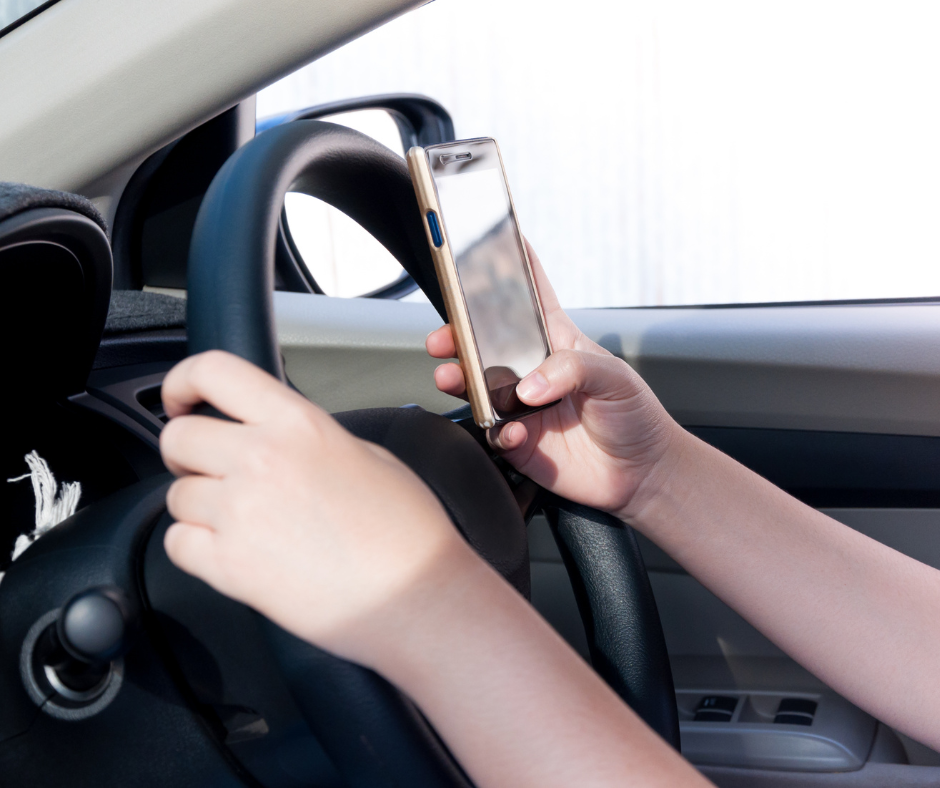

Every day, nine Americans lose their lives in car crashes suspected to have been caused by a distracted driver. Distracted driving occurs when a driver's attention is diverted from the road. The risk of car accidents rises when a driver is distracted. A distraction might be anything that causes you to take your mind off the road. Distracted driving involves texting, chatting on a cell phone, using a navigation system on your phone or any touchscreen interface, and eating. These things can put you and your passengers and other drivers at risk.
We can categorize distractions on the road into three:
· Visual distractions or diverting attention away from the road
· Manual distractions or taking the hands off the steering
· Cognitive distractions or mentally diverting oneself from the task of driving
Thousands of Americans suffer because of distracted driving every year. In 2019, accidents involving a distracted motorist resulted in over 424,000 injuries and 3,100 fatalities. Around 20% of traffic fatalities were pedestrians or cyclists who were not in a car at the time of the accident.
Distracted driving is more common among specific demographics. As a result, distracted driving legislation has been passed in many jurisdictions to help safeguard the public from further injury and fatalities.
Such examples include restricting the number of minors who can ride as passengers with teenage drivers and making it illegal for drivers to use handheld electronic devices while behind the wheel. In addition, high-visibility enforcement (HVE) measures for distracted driving laws can be beneficial in cutting down cell phone use while driving. However, the efficacy of cell phone and texting regulations requires further study.
Many folks, unfortunately, still ignore public service announcements and basic sense and use our phones while behind the wheel. We have become so reliant on our phones that we don't think twice about taking them up in dangerous situations, such as behind the wheel.
Cell phones are linked to incidents resulting in significant injuries and even fatalities for innocent bystanders.
The statistics on the dangers of texting and driving are shocking. It is estimated that over half a million motorists attempt to use their phones while driving at any given moment.
Thanks to smartphones, maintaining constant contact is a breeze. But, if a person decides to check any electronic communication on other mobile applications while driving, that can eventually result in risk and danger to both the driver and the people around them.
How Do Cell Phones Cause Crashes?
In many states, it is already against the law to use a handheld mobile phone or similar device for any purpose while driving. Like eating, drinking, tinkering with the music, or adjusting the GPS, using a telephone while driving is cognitively distracting. Among the ways it can increase the risk of an accident are:
1. The driver has only one hand on the wheel, reducing his ability to respond quickly in an emergency.
2. The driver's attention is diverted from the road while dialing, searching for, or messaging on the phone.
3. An individual's visual processing capacity and peripheral awareness are reduced while texting or talking on a cell phone.
4. When a split-second decision needs to be made to avoid an accident, a driver whose attention is diverted by a phone call or text message is putting themselves and others in danger.
5. When a driver's attention is diverted from the road to focus on his phone, he is more likely to cause accidents by weaving, swerving out of his lane, or colliding with a guardrail or sign.
The Consequences of Using Cell Phones While Driving
How significant is the role of cell phones in causing accidents in the USA?
- More than 1.6 million car accidents occur yearly because drivers are texting or talking on the phone, compared to drunk driving, texting while behind the wheel is six times as risky.
Although using a cell phone of any kind can indeed be a distraction, studies have proved again and time again that texting while driving is particularly dangerous.
- Every time you send a text, you remove your eyes off the road for around five seconds. It may not seem like much, but at 55 mph, your eyes will have been off the road for the length of a football field.
- Distracted driving is dangerous for everyone, even the youngest and least experienced drivers like teenagers. Although 94% of teens agree that texting and driving is dangerous, 35% say they do it regardless. It is common knowledge that texting and driving is extremely risky, yet many people still check their phones until they get behind the wheel.
When you combine the cognitive demands of driving with those of using a cell phone, your reaction time suffers. Because of this, you will be less responsive to things like brake lights and lane changes if you use mobile tech while driving.
Talk to a personal injury attorney ASAP if you or another person has been hurt in an accident caused by someone using a cell phone while driving.
The burden of proof rests on the plaintiff in an automobile accident lawsuit to establish that the defendant's negligent actions were the direct cause of the plaintiff's damages.
Recent cases prove that a driver's mobile phone use during a collision (or before) can make the driver negligent or legally at fault. Additionally, a company could be liable if an employee causes an auto accident while on the clock and doing work-related things like talking on the phone or texting. As a result, many companies are banning employees from using any phone or device (including company-issued ones) while behind the wheel.
If you have been injured in a car accident, get a free consultation by calling us at 877-721-9494 or visit one of offices in Greenville SC, Charleston SC, or Rock Hill SC.
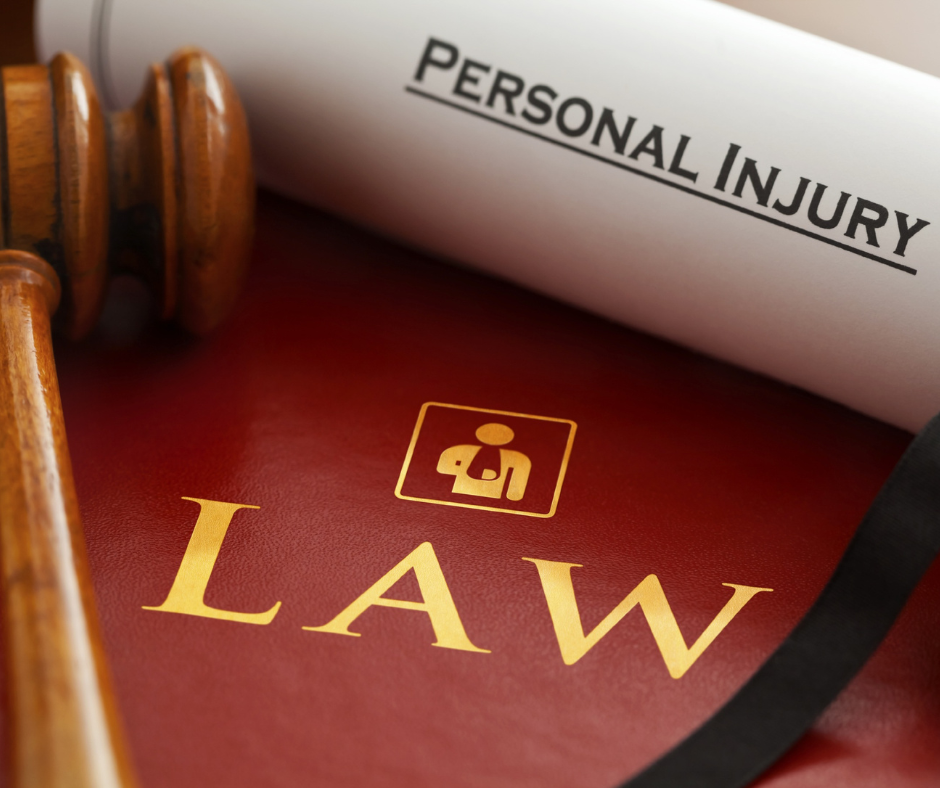

Personal injury lawsuits that involve life-changing events like auto accidents must always be handled by a knowledgeable and emphatic personal injury lawyer Charleston SC. Many factors make personal injury lawsuits complex, including that insurance companies have dedicated legal teams that will do everything they can to reduce the cost of settlements and minimize liabilities. While it's never personal, the work of the opposite legal team will always be against the plaintiff's claims, and that's why you should be ready with an experienced attorney in personal injury law in Charleston SC.
How Does "Pain and Suffering" Work?
The term "pain and suffering" is commonly used to refer to the noneconomic damages of mental anguish and physical injury. It encompasses the physical and mental suffering that results from an injury. Loss of enjoyment of life is one example of the non-monetary damages that fall under this umbrella term.
Damages for loss of enjoyment of life reflect the aggravation and distress one feels when they are prevented from engaging in past pleasures.
It's normal to feel like your world has turned upside down after suffering injuries in an accident that wasn't your fault. Suddenly, you must schedule your life around medical procedures and doctor's visits, keeping you from returning to work while you focus on getting better.
You're suffering from physical discomfort, mental distress, and emotional strain. You may have heard that in addition to medical bills and lost wages, you can seek compensation for your emotional distress by filing a personal injury claim.
Understand that two types of suffering can arise from a personal injury case: physical and emotional. What does each term mean?
Physical
A victim's physical suffering because of their injuries. It includes the present and future difficulties they face because of the defendant's negligence and any difficulties they may face in the future.
Mental
The victim's mental state is affected by the daily reality of living with pain and physical injury.
They probably feel a wide range of emotions, including anxiety, shock, hopelessness, humiliation, anger, and fear. In a nutshell, the term "mental pain and suffering" refers to any distressing feelings the victim may be experiencing because of the accident. Everything that has come up in your mind because of the shock of the accident is included here.
Sleep disturbances, mood swings, anger, and depression are all symptoms that can occur when a victim is overwhelmed by emotional distress. PTSD, depression, and a general lack of interest in life are some other symptoms that may be present.
Many years, if not a lifetime, may pass before the victim finally finds relief from the physical and mental pain and suffering.
Most people have never been a party to a legal dispute. Consequently, many people who have been injured in an accident and their loved ones are hesitant to file a personal injury claim.
A lawsuit might go to trial before a jury, but in practice, this rarely happens, and the litigation process shouldn't be traumatic for the parties involved. From meeting with an attorney to settling your case, each step of the personal injury lawsuit process is outlined below.
1. Consulting with a Lawyer About Your Accident
After seeking medical attention for injuries sustained due to another's negligence, the next step is to speak with a personal injury lawyer to determine whether you have a case.
Do not forget to bring any notes, medical records, and other paperwork you may have taken that pertain to your situation. Consultations with personal injury attorneys are typically free of charge, so you won't have to worry about shelling out money right off the bat.
2. Assessing the Legal Counsel
The outcome of your injury case may hinge on whether you have the right attorney representing you. Talk to the lawyer about their experience and success rate with cases like yours, how they handle client communication, and anything else on your mind.
The lawyer will ask you many questions at the first consultation to get a feel for your situation. However, be wary of any lawyer who guarantees a specific settlement amount in the first meeting. To determine the worth of your case, a reasonable attorney will need more time.
3. Hiring Legal Defense and Understanding How They're Compensated
Personal injury lawyers typically don't get paid unless you do. When your case concludes, and you receive compensation, your attorney will receive a fee equal to a percentage of that amount as payment for their services.
If you decide to retain legal representation, you'll be asked to sign a client contract outlining the terms of your relationship and the agreed-upon fee. Therefore, answering all your questions about the fee is essential before signing the contract.
4. Case Investigation
Your lawyer will investigate your case to learn what happened to you and the full scope of your injuries, damages, and associated expenses. Then, the insurance company will be contacted, and a lawyer for the at-fault party may be consulted if necessary.
You can rest assured that your lawyer will keep you updated on the status of the case and any negotiations or other significant developments. Getting the care, you need and returning to your routine as soon as possible should be your top priorities.
5. Reaching a Possible Settlement
Personal injury claims are often settled out of court. Your lawyer will speak with the insurance company representing the negligent party.
Most of the time, the insurance company will make a settlement offer, and your lawyer will advise you on whether to accept the offer. A lawyer's opinion is valuable, but whether the settlement is satisfactory is up to you. If you've been injured and want to know how much your case is worth, click here.
6. The Pretrial Procedure
Your lawyer will take the matter to court if a fair settlement cannot be reached. A judge will then establish time limits for each step of the litigation. Depending on the circumstances of your case, this could take anywhere from several months to several years.
7. Mediation
Requests for mediation, an alternative dispute resolution, can be made at any proceeding stage. A mediator acts as a referee between the parties and brings in the lawyers for both sides. As the mediator facilitates, each side makes its case and attempts to reach a compromise. However, the parties involved in a mediation session are under no obligation to accept the mediator's proposal.
8. The Courtroom
Your attorney will argue your case in front of a judge or jury, and the other side (the defendant) will present their defense afterward. The judge or jury hears evidence and arguments from both parties and then decides who is liable for the harm and injuries you suffered and how much the defendant must pay.
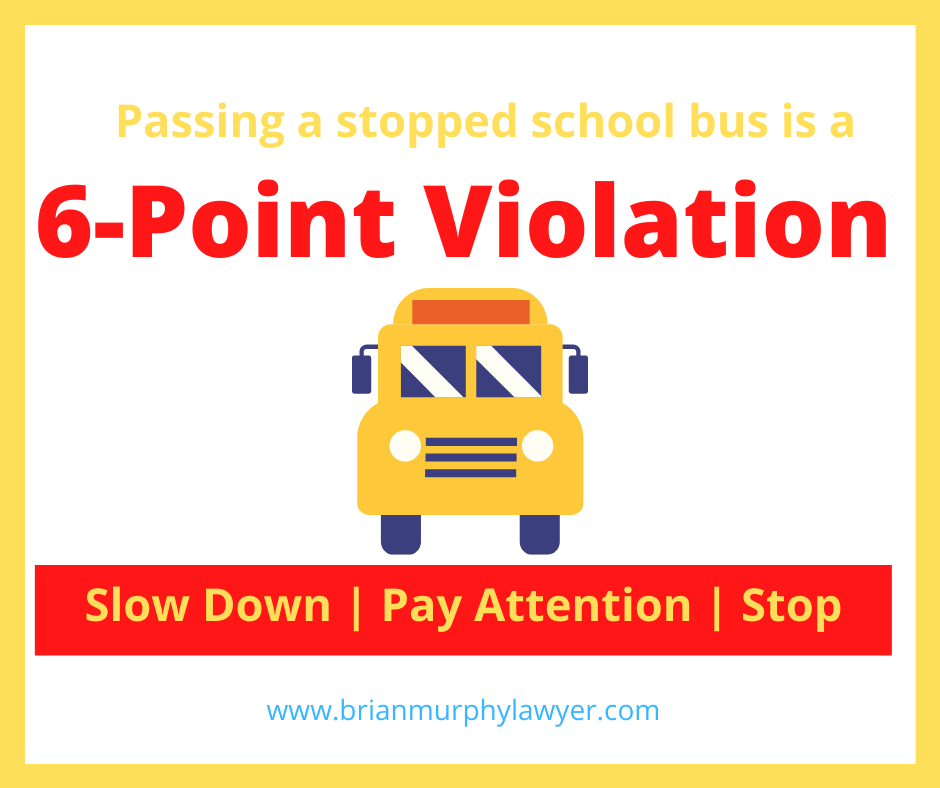
Early September, we posted 5 Rules for Approaching a Stopped School Bus. We reviewed the rules of the road about when to stop and when to go when encountering a school bus on the highway. According to a national survey, these rules are being violated every day.
In 2019, the National Association of State Directors of Pupil Transportation conducted a nationwide survey to report passing violations. The 39 states participating reported 95,494 passing violations in a single day. South Carolina reported 223.
Convictions are a 6-point violation on your driver’s license and can be proved by onboard video. Cameras are installed in the stop arm of certain school buses to catch rule breakers. The legal penalties add up for multiple violations.
For a first offense, a violator can be fined up to $500.00 or imprisoned up to 30 days. A second or subsequent offense can bring fines of $2,000.00 to $5,000.00 or imprisonment from 30 days to sixty days.
The penalties are greatly enhanced if the violator causes great bodily injury or death. A conviction is a felony, includes a fine of $5,000.00 to $10,000.00, and 60 days to one year in jail. If death results, the fine increases to $10,000.00 to $25,000.00 and imprisonment from one to five years.
Our take: Slow down, pay attention, and stop for school buses.
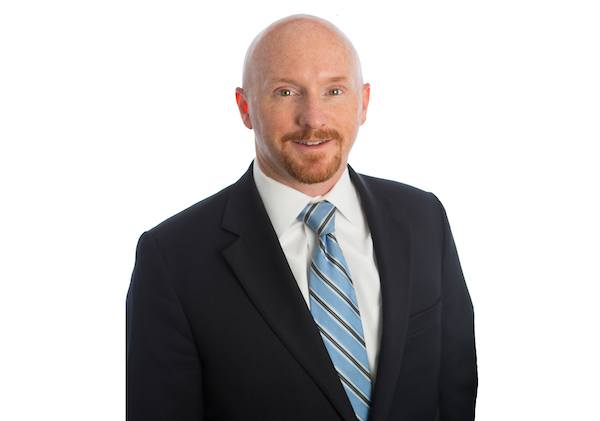

I wrote the first part of this article here. If you missed it, I detailed how a distracted driver crashed into a vehicle behind me, moved that vehicle to the side, and then crashed into my vehicle. While I was released from the hospital without serious injuries, the whole ordeal continued to be frustrating.
First, a disclaimer, I am pro-law enforcement. I have many close friends who bravely serve to protect our communities. Our officers put their lives at risk every day to protect all of us. I am very much indebted to those dedicated public servants.
The trooper who responded to my traffic collision was not professional. Many of my clients have told me about inaccuracies and errors in police reports. These errors usually make the largest impact when my clients are being deposed. Skilled defense lawyers will compare the police report with my client’s version of the collision. Many clients are dumbfounded when the police report notes that they were not injured.
Having that background, I was very careful to tell the responding officer the truth. I was hurt, I told him, but did not need an ambulance. As many of you know, some very painful and lasting injuries do not require an ambulance ride to the hospital. I also told the EMS that I was injured. They evaluated me on site and told me to get medical attention.
After the trooper finished investigating, he told me he would send the FR10 the next day to my email address. Without the information on that form, I couldn’t verify whether the at-fault driver had insurance, I couldn’t get a rental car, and I couldn’t get my vehicle damage evaluated.
I figured the officer was busy, but that the form would probably come on day 2. When the officer still hadn’t contacted me, I called his office and left a message. He didn’t return my call. Day 3 came and went without any contact. Finally, on day 5, I received an email that contained the FR10.
Five days is way too long to process an FR10. During that time, I had no information about the at fault driver, I did not know whether or not he had insurance, and I could not arrange for a rental car. That waiting only added to the frustration and anxiety of being in a car accident in the first place.
Next, I found errors on the collision report. First, the officer indicated on the report that I was not injured. It must be a mistake, I thought. I also noticed that a passenger in the car directly behind me was not listed. I respectfully replied to the officer’s email that I had read the report, that I recalled telling him I was injured, and that I believed a passenger’s information had not been included. I kindly asked him to revise his report.
His reply was surprising. The officer told me he remembered me telling him I was hurt. However, since he didn’t see any visible signs of injury, he indicated on the report that I was not. He also told me that because the passenger did not seem hurt to him, he had not included the passenger’s information on the report either. Finally, he refused to correct the report.
I knew this inaccurate report could cause many problems down the road. I couldn’t believe a police officer would knowingly refuse to correct these inaccuracies. His errors could cause doubt about whether or not I told him I was hurt. They could lead to an inaccurate investigation by the insurance companies because the passenger’s name and contact information were not included. Leaving a witness’s information off that report could deprive an injured party of finding relevant evidence and testimony.
In a following article, I will continue to detail my auto collision saga. My future articles will discuss the challenge in getting my vehicle fixed, and how I eventually took my own medicine when it came to being the victim of an auto collision.


I was on my way back to my in-laws’ home after a run on Hunting Island State Park last month when it happened. While at a complete stop, I heard the crunching of sheet metal behind me. Before I could react, I felt the uncontrolled forces of a large object crashing into the rear of my SUV. While I was not aware of it the time, a driver two vehicles behind me didn’t stop with the rest of traffic. The driver plowed into the vehicle behind me, moved that vehicle to the side, then crashed into my vehicle.
Initially, I didn’t know exactly how the collision happened. All I experienced was noise behind me, thinking I was about to get creamed, and then the sudden impact. Afterwards, I did not understand that the car who had hit me, had also hit the car that had stopped behind me. The immediate aftermath of the crash felt like a fog. I didn’t fully understand what happened until I started taking pictures of the scene.
It did not appear that the driver who caused the crash had applied his brakes at all. The first vehicle looked totaled. While my vehicle did not appear mangled, I later found out there was hidden damage underneath.
I was hurt but didn’t need an ambulance. I thought a quick trip to an urgent care practice would be sufficient. Unfortunately, the doctor at the urgent care told me to go directly to the emergency room for further evaluation.
My heart sank, my blood pressure rose, and I felt scared. Would I be okay? Would I need a lot of expensive treatment? Would I be able to go back to work? Frustration set in.
Unfortunately, frustration will be a continuing theme to my story. I thought of all my clients over the years. I now experienced their frustration firsthand instead of just sharing in it. What really frustrated me the most is how the insurance company treated me as a liar, beggar, and low life. My injuries will heal, so I’m not trying to suggest my collision is catastrophic. Many of you were injured to a much greater degree. That said, my experience is why we treat every case with the same level of attention and care. Even a “minor” collision can have a significant impact on those involved. In following articles, I will chronicle my ordeal as I write about how the police mishandled this crash, the challenge in getting my vehicle fixed, and how I took my own medicine, following the guidelines that I give to my clients.


Many of us have not said these words in years. Once, we said them every school day. Lately, I have been saying those words more frequently as I belong to organizations who start their meetings with the Pledge of Allegiance.
Today, the subject of justice seems to divide us. We argue and fight over its meaning. What some say is just, right, and fair often depends on the profit motives of groups. The fight then shifts online where we battle each other in the comments section.
For me, justice for all is bedrock principle of our country. Yes, it is absolutely true that we have not historically afforded justice for all. It is also true that we do not currently afford justice for all. However, over time American’s development and our laws’ development have demonstrated a willingness, an eagerness, and a tradition of self-evaluation, self-criticism, and self-improvement.
That tradition is engrained in our Declaration, Constitution, and laws. I take comfort that our country will seek out ways to extend justice. I take pride that we will develop as a people and a country. I take joy that we will improve our provision of justice until our reality, our laws, and our attitudes match our ideals.

Written by Brian R. Murphy.

As the hurricane season kicks into high gear, our television sets and social media accounts are filled with hurricane news. We see images of flooded and destroyed homes. Our hearts break.
We correctly respond to the suffering of others in natural disasters. We donate money. We volunteer. We rightly offer our thoughts and prayers. These natural disasters are horrible, but I can’t help but wonder if we have become desensitized to victims who suffer from other causes.
Hurricanes killed 38 people in 2018. Motor vehicle crashes killed 4,074 children in 2016. Distracted driving killed 3,166 in 2017 (although I believe that number to be very low).
Based on the numbers, we should be mobilized to decrease childhood deaths from car crashes. We should be demand stronger distracted driving laws. We should be raising awareness about the carnage that is occurring on our streets.
However, we seem to be indifferent to the suffering of victims of car accidents and their families. Those disasters occur much more frequently than natural disasters. While texting and driving is killing thousands and car crashes are the number one killer of children, we continue to act as if those deaths are not as important. We continue to drive while distracted.
Is this because we are desensitized to vehicle crashes? Are we accustomed to blood flowing on our streets? Are we okay with killing people because we can’t wait to read a text message? Are we okay with children dying because it is too inconvenient to lock down our phones?
It’s time for our hearts to break for car crash victims. It’s time for us to make save driving a priority. It’s time for us to reduce the number of child car crash deaths. It’s time for us to stop distracted driving.
After all, every life matters whether it ends because of a hurricane or car accident. The difference is that we have the immediate power to significantly decrease traffic accident deaths. Commit to stop distracted driving yourself. Encourage others to stop distracted driving. Promote stronger distracted driving laws by contacting your state senator or legislator.

Written By Julia C Khaled

Woman Helping Senior Neighbor With Paperwork
Each of these 13 disturbing estate planning facts is true; but, each situation can be avoided with a strong, individualized, comprehensive, and up-to-date estate plan.
· If you don’t name a guardian in your will, your minor children could end up with persons you either don’t like or don’t know.
· If you don’t provide for your pet in your estate plan, your pet may be euthanized when you die.
· If you put assets in joint tenancy with a second spouse, your children may be disinherited.
· If you put the family vacation house in joint tenancy with a sibling, your children will not inherit your share of the house if you die before your sibling.
· A troubled child’s inheritance could make a drug, alcohol, or gambling addiction worse or even kill them.
· After you die, your spouse may loan or give the assets you left for the family to a new friend/spouse.
· Your gift to a family member may disqualify him or her from receiving Medi-Cal or Veterans benefits to pay for long term care expenses.
· Powers of attorneys may get “stale” and should be updated every few years.
· If your spouse gets into a serious car accident after your death, all of the assets that you left for him or her and the children can be seized in a law suit.
· Your child’s spouse could get his or her hands on all of the money you give to your child outright.
· If you put your child’s name on your house or bank account, his or her creditors may be able to seize those assets.
· If you transfer your house to your children during your lifetime, they get your original tax basis and could pay much higher capital gains taxes when they sell it than if you transferred the house to them at your death.
· Assets given outright to a special needs beneficiary are likely to disqualify him or her from receiving vital governmental assistance. So, your money goes down the drain and causes a logistical hassle.
Indeed these 13 estate planning facts are completely avoidable with good planning. Be sure to consult with a qualified and experienced estate planning attorney.
Julia C. Khaled, Esquire, LLM (Taxation)
Founder/Senior Attorney
KHALED LAW
1430 Ebenezer Rd., Suite 104
Rock Hill, SC 29732
Main Tel: 803.980.1199
Fax: 803.980.1178
Web: http://www.jklawfirm.net
If you enjoyed this article please consider sharing it for your friends!
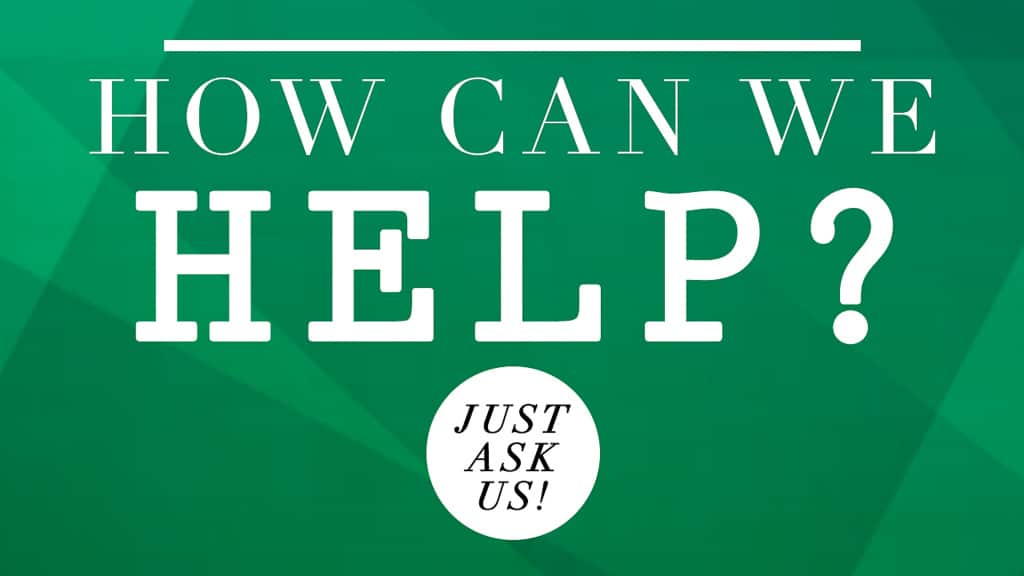
Written By Frank Bentley

Internally at the firm we talk at length about what constitutes a case and if some prospective clients even need to talk to an attorney.
I am actually the one who first talks to almost all of our prospective clients. Ultimately I do not make the decision on whether you have a case, but the attorneys have taught me a great deal on how to help people on the front end of a dispute so that I don’t waste your time.
We decided as a firm that one of the worst client experiences would be for you to talk to someone, get all excited that you are going to get a million dollars from this shady insurance company only to sit down with an attorney at your first meeting and find out that you actually aren’t going to get a million dollars and in fact we aren’t even going to accept your case.
That puts a little bit of pressure on me to make sure that I get all of the information I can from you on the first phone call to our office. This helps me determine if you need to see an attorney, if I can give you some resources to help you handle a claim yourself, or if I need to send you to an entirely different attorney who handles your specific kind of case.
What am I looking for to make that decision? It’s really basic: I need to hear your story. Don’t worry. I’m not giving you less points if your story-telling isn’t winning any academy awards. I just need to know what happened, who was at fault for the incident, and what has to happen to get you back to the way you were before this whole mess started.e
You may not have the answers to all of these questions right away. That’s OK! It’s still OK to call even if you don’t know if you need us. The “worst” thing I am ever going to tell you is that I don’t think you need an attorney. That’s it. There will be no name-calling or frustration or some idea that you “wasted my time”. I love talking to people and since I’m not a paralegal I will not have many opportunities to work with you directly with your case, so I enjoy this chance to help.
Our firm prides itself on providing the best possible client experience and we will do everything we can to make sure the beginning of your case is just as happy as the end. Thanks for reading!
If you enjoyed this article please consider sharing it for your friends!

Written By Joanna Harvey

When you think about your 4th of July celebration, what comes to mind? Family, games, barbecues, and of course fireworks. But consider for a moment the origin of what we now value as a part of our culture.
The highlight of so many peoples Independence Day celebration is the customary fireworks display – a truly American tradition. But, even though the firework has been a symbol of Patriotism for centuries, the origin behind the sparkling rockets is a little darker. Fireworks were originally thought to have been used as early as 200 B.C. by the Chinese to ward off evil spirits, using roast bamboo whose air pockets would explode and make a loud bang when heated. While attempting to create an elixir for immortality, the Chinese started inserting potassium nitrate, charcoal, sulfur, and a few other ingredients to create an early form of gunpowder into the bamboo shoots, thus the first firework was born.
Now, while the Chinese may have invented a primitive version of the now popular firecracker, they were not used in terms of celebration until about 1605 – the year of Guy Fawkes. On November 5, 1605, a group of Catholic conspirators – led by Guy Fawkes, attempted to blow up the English Houses of Parliament, knowing that King James I of England (King James IV of Scotland) and many other parliamentary members would be in the building. At the time, this was known as the Gunpowder Plot. Fawkes and all of his men believed that the English and Scottish king was a heretic, driving out Catholic subjects. On October 26, 1605, an anonymous letter alerted authorities as to the existence of the Gunpowder Plot, and a search party on November 4 proved that the anonymous source had been correct. Guy Fawkes was found in a cellar below the House of Lords with 36 barrels of gunpowder and matches in his pocket. In January of 1606, Fawkes and his co-conspirators were found guilty of high treason, and sentenced to death by hanging, drawing, and quartering.
After the Gunpowder Plot was revealed, many Londoners began lighting bonfires and setting off fireworks in celebration that the plot had been foiled. English Parliament christened November 5, Guy Fawkes Day, as a day of thanksgiving.
Now, back to the United States - the first recorded Independence Day fireworks display was in 1777 in Boston and Philadelphia – a tradition that is a now part of our very fabric. And the rest is history… Have a happy and peaceful Independence Day.
If you enjoyed this article please consider sharing it for your friends!